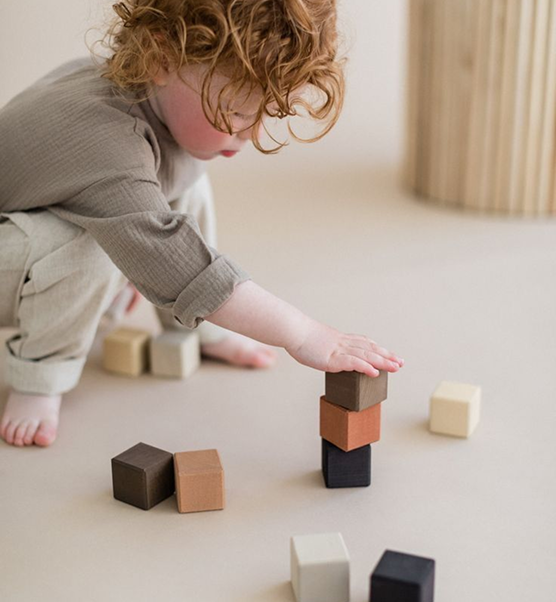I am a fan of Instagram, and I will admit to sometimes scrolling through it while with my children. And, yes, sometimes they look. And sometimes when they look, there is a woman dressed up in a vulva costume, explaining how the vagina works. It is perhaps fortunate that they do not look too closely, as I’m not always ready for that conversation.
But: I’m thrilled to speak to that woman, Dr. Sara Reardon, in an interview today. She’s The Vagina Whisperer on Instagram and online. She’s got an awesome and very real blog, talking about all the pelvic floor issues that we just do not discuss enough. And I’ve got her here to talk about what’s normal and what’s not, and how important it is for everyone to be aware of their pelvic health (and get help when they need it).
We think of the bony pelvis, with your hip bones on the side and your sit bones on the bottom, pubic bone in the front and then your sacrum tailbone in the back. That helps support your spine and plays a very important role in movement. The pelvic floor muscles are at the base of that bony structure, and they sit like a hammock. So imagine a hammock kind of at the very base of your pelvis and that hammock supports your pelvic organs, including your reproductive organs — your bladder, your rectum, your uterus, your ovaries. It has a supportive role.
It also has what we call a sphincteric role. There’s openings in those muscles. In a female body, there are three openings: one for the urethra where urine exits, one for the anus where poop exits, and then the vaginal opening. In male bodies, there are two openings: one for urine and semen and then one for the anal opening where poop exits.
This [sphincteric] role also has a sexual function. Again, in a female body there is a role with menstruation and pregnancy and birth. If you have a vaginal birth, the baby exits through the vaginal canal.
I think one of the reasons we hear about it more often during pregnancy, childbirth, and postpartum is because our bodies go through such a huge transformation. These muscles that, again, sit like a hammock support your growing fetus during pregnancy. When we get those emails that are like “Your baby’s the size of a blueberry, then it’s the size of an avocado, and then it’s the size of a pumpkin.”
Think of a hammock supporting a blueberry or an avocado. It’s not going to change that much. But if you think about putting a watermelon or a pumpkin in a hammock, we can think of that hammock sinking lower, getting more stretched out, and that’s literally what happens to our pelvic floor and our ligaments during pregnancy.
Pregnancy itself changes the way that our muscles are supporting our organs and the way we’re able to keep those sphincters closed. We have a more difficult time holding in urine, a more difficult time holding in gas or stool, because everything’s just lengthened. And then we take it to the next level, which is a major event — childbirth. Often, unfortunately, in the United States the majority of folks who give birth vaginally are lying on their back, which is not the most optimal position to necessarily open the pelvis and have baby come down the birth canal. They’re also pushing and holding their breath for a really long time.
If you are pushing and straining, that’s putting a lot of pressure on these muscles, which are already vulnerable and lengthened. And then the majority of folks giving birth vaginally also have a perineal tear, which is compromising the muscle function and the structure. They go on to heal, but it maybe doesn’t heal as well as it was prior to that injury.
Thirty percent of folks are giving birth via cesarean section, which we may think kind of spares the pelvic floor, but that’s a major abdominal surgery and your abdominals are closely connected to your pelvic floor. In addition, you also went through pregnancy, and so that itself changes your body.
Then the last thing is postpartum, and we know that we just have very little follow-up care and rehabilitation for moms after giving birth. There’s maybe one visit in our postpartum care with medical providers, and 40% of folks don’t even attend that visit. And then that’s it! So after this huge transformation, potentially major surgery, potentially a tear at the vaginal opening or scar tissue, there’s no rehabilitation. We don’t do that with any other major medical event. If you have surgery, if you have a knee replacement, if you have a shoulder surgery, if you have an ankle sprain, you get physical therapy, and yet there is no follow-up after this huge physical change.
I also feel like part of the issue is that a lot of the symptoms that arise as a result of some of these issues are things that we have come to think are just, “Well, that’s what happens, right?” People are like, “Well, you know after you have a baby, you’re just going to pee on yourself a lot of the time, and I guess that’s just something you have to live with.”
I think that they also have a hard time with where the line is, and where is the point at which this is not just the way it is? To be concrete: for most people, the first time you have sex afer you have a baby, it’s a little different and can be uncomfortable. But then the question is: If that is still happening six months later, is that a different thing? How do people know when they should ask for help? Maybe the answer is you should always ask for help. But I’m curious if you have a sense of how people could understand what’s “normal” and what’s something they should ask about?
I always thought it wasn’t fair that I just happened to pick this right profession where I got all of this education, and I’m like, why doesn’t everybody get this education? This should be the standard of care. But again, going back to the question: I think that these are really intimate things to talk about. And once we do feel like, okay, maybe I should say something, we don’t even know where to go!
Do you go back to your OB or midwife? Do you go to your primary care doctor? Do you just talk to a girlfriend? And then once you go to these people, it often feels dismissed. I think that that comes back to the medical side of things. Why aren’t our medical providers offering more care? I can’t even tell you how many times that I’ve been to an office visit and I’ve never been asked about my bladder health, my sexual health.
You run through this battery of tests, and they’re like, “Okay, we’ll send you your lab results and let you know if anything pops up.” There’s no question about any of these issues. I’m going to be reaching menopause soon; my body’s changing. Why aren’t these questions being brought up so we can proactively screen for them and then give people the resources that they need? This is where I think a lot of the education needs to come in. From the medical provider side, the data is clear: if we don’t ask patients specifically about these issues, they are not going to tell us.
But I presume that there are things one can do beyond just additional kegels.
The thing I tell people is that if you are having any sort of pain — pain is not normal. Pain is a signal that something is not functioning optimally in your body, and that should be addressed. Again, that comes down to, “Well, how often do I just kind of grit my teeth and bear it?”
Sex should be pleasurable. Comfortable. It shouldn’t even just be “tolerable.” If not, you should be seeking help. Yes, the majority of people — 9 out of 10 people — do experience painful intercourse their first time after giving birth. But again, we should tell them, “Hey, it may be a little bit uncomfortable when you go back to it.”
Painful intercourse, pelvic pain of any sort. Urinary leakage — no amount of leakage is normal. You may experience it with a cough or a sneeze. But again, that’s incontinence. That is saying your sphincters are not responding well with pressure, and that’s a musculoskeletal issue that needs to be addressed. Same thing with pooping issues: hemorrhoids, fissure, straining with bowel movements, constipation. Not normal. You need to see a PT.
Then again, people say, “Well, maybe it doesn’t bother me that much.” I’m saying: once it starts bothering you to the point where it’s affecting your life, that’s a problem. If you don’t want to go out with your girlfriends because you’re worried you’re going to pee your pants. You don’t want to go running with your kids at the park because you’re afraid you’re going to leak. You quit working out — which is so important for your mental health — because you soak through your gym shorts or leggings.
Intimacy issues! I mean, as if we need enough barriers to returning to sex after kids. Pain does not need to be one of them. I’m like, “If I can just stay awake long enough…”
But of course, that is also very damaging.
Why aren’t we proactively educating people on how to push optimally during birth, or training medical providers about how to help patients do? Versus kind of going through the same things we’ve always done, where we’re getting the same results: 50% of people are incontinent after the age of 65. It’s always kind of looking at it from both sides.
But again, the hard part about these pelvic floor issues is I don’t think we realize how far these ripples go. We know that exercise helps with depression and anxiety and sleep. We know that if you’re not interacting with your kids in the same way, that can affect your relationship. If you’re not interacting with your partner in the same way. People are missing work because of pelvic floor issues. If you have a job where you have bladder issues and you can’t use the restroom often, I think of the ripples of these things. I’ve had people, teachers who can’t work, nurses who can’t work because of pelvic floor issues. So these ripples start to really kind of seep into different aspects of our life, and that’s unfortunate. We don’t need more barriers keeping women out of the workplace.
I think that was actually quite important for people to understand, “Okay, if I’m experiencing this, it may not be something I want to talk about with everybody, but now I know that there’s this sort of solution.” I almost wonder if there’s a role for, I don’t know, maybe you could have some advertisements on television. Like a Super Bowl ad. Would you do a Super Bowl ad about this?
That’s the hard part. I always feel like it’s a little bit of, like, David versus Goliath. Like these physical therapists are the boots on the ground, and we’re trying so hard, and we’re just trying to work against this medical system and these pharmaceutical companies. They really have such an advantage, because we’re not taking doctors out to lunch or we’re not putting commercials on.
I do think that there are a lot of companies that are servicing female bodies with incontinence liners and period products, and I see where they are changing their narrative a little bit. I’m hearing less and less “Little leaks are just part of being a lady” and I’m hearing more “Hey, this can help you live your life, but there’s also other resources for you.”
I’ve worked with those that really have that same philosophy of “I’m not trying to normalize this, but I’m trying to make this normal conversation.” I’m also giving people other options that are long-term solutions versus just, like, slip a liner on and then go about your day.
What is the place to go to, to almost arm yourself with information or understanding?
But there are two places I would say to look. One is called the Academy of Pelvic Health [Physical Therapy]. That is where all physical therapists are — well, not all physical therapists. Some physical therapists are members. It is kind of our national organization of pelvic floor PTs. There’s also, on there, a PT locator.
So if you’re looking for a pelvic floor therapist in your area, I would go to that website and go to the PT locator and look for someone in your area. In every state in the United States, you can get an evaluation by a physical therapist without a referral from a physician; so you can at least get an evaluation to say, hey, how is my pelvic floor functioning? Do I need anything else?
Then, most often we have relationships with physicians who would see you if you needed continuous medical care. In my state, you don’t even need to follow up with a physician; we can just continue seeing you as long as you progress.
There’s another website, called Pelvic Rehab, that also is another great resource to find a physical therapist. Even on my website, we have tons of blog posts about, for example, what helps with pain after sex? If you have pubic bone pain during pregnancy, what do you do? How do you push optimally during birth? I’m sure there’s so many other physical therapists that just have this information that we’re teaching people day-to-day in our clinics. We just want more people to have access to that info.
So, I do [videos], and part of it is that I also want to bring some levity and lightness to this. These are to me such approachable conversations for me personally, and I think we have fun. It doesn’t have to be so serious. We can normalize it, but it can also still be kind of fun to talk about and learn about.
Community Guidelines

























Emily:
I am so thrilled to be here with Dr. Sara Reardon. She’s a doctor of physical therapy and women’s health and a pelvic floor therapist. She has two children. Sara, I know you best from Instagram, where you are The Vagina Whisperer, which is just the absolute greatest Instagram handle. And I’m really thrilled to get to talk, but before we get started, can you introduce yourself a little bit beyond what I just said?